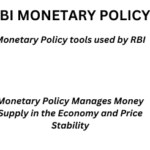Green tax to be imposed on older vehicles soon: Ministry for Road Transport and Highways

The Union Ministry for Road Transport and Highways has approved a proposal to levy a “Green Tax” on old vehicles which are polluting the environment. The proposal will now go to the states for consultation before it is formally notified. The main principles to be followed while levying the Green Tax are :
- Transport vehicles older than 8 years could be charged Green Tax at the time of renewal of fitness certificate, at the rate of 10 to 25 % of road tax;
- Personal vehicles to be charged Green Tax at the time of renewal of Registration Certification after 15 years;
- Public transport vehicles, such as city buses, to be charged lower Green tax;
- Higher Green tax (50% of Road Tax) for vehicles being registered in highly polluted cities.
- Differential tax, depending on fuel (petrol/diesel) and type of vehicle;
- Vehicles like strong hybrids, electric vehicles and alternate fuels like CNG, ethanol,LPG etc to be exempted;
- Vehicles used in farming, such as tractor, harvestor, tiller etc to be exempted;
- Revenue collected from the Green Tax to be kept in a separate account and used for tackling pollution, and for States to set up state of-art facilities for emission monitoring.
The benefits of the “Green Tax” could be :
- To dissuade people from using vehicles which damage the environment
- To motivate people to switch to newer, less polluting vehicles
- Green tax will reduce the pollution level, and make the polluter pay for pollution.
The Ministry also approved the policy of deregistration and scrapping of vehicles owned by Government department and PSU, which are above 15 years in age. It is to be notified, and will come into effect from 1st April, 2022.
It is estimated that commercial vehicles, which constitute about 5% of the total vehicle fleet , contribute about 65-70% of total vehicular pollution. The older fleet, typically manufactured before the year 2000 constitute less that 1 % of the total fleet but contributes around 15% of total vehicular pollution. These older vehicles pollute 10-25 times more than modern vehicles.
National Clean Air Programme (NCAP)
It is a time bound national level strategy for pan India implementation to tackle the increasing air pollution problem across the country in a comprehensive manner .
- It is a five-year action plan to tackle pollution across the country.
- Collaborative and participatory approach involving relevant Central Ministries, State Governments, local bodies and other Stakeholders with focus on all sources of pollution forms the crux of the Programme.
- Overall objective of the NCAP is comprehensive mitigation actions for prevention, control and abatement of air pollution besides augmenting the air quality monitoring network across the country and strengthening the awareness and capacity building activities.
- The tentative national level target of 20%–30% reduction of PM2.5 and PM10 concentration by 2024 is proposed under the NCAP taking 2017 as the base year for the comparison of concentration.
- Other features of NCAP include, increasing number of monitoring stations in the country including rural monitoring stations, technology support, emphasis on awareness and capacity building initiatives, setting up of certification agencies for monitoring equipment, source apportionment studies, emphasis on enforcement, specific sectoral interventions etc.
LEARNING FROM HOME/ WITHOUT CLASSES/ BASICS
PM2.5 means particulate matter in the air – caused by motor exhaust or anything combustible – that is less than 2.5 micrometers. Fine particulate matter (PM2.5) is an air pollutant that is a concern for people’s health when levels in air are high
WHO’s air quality guidelines state that by reducing particulate matter (PM10) from 70 to 20 micrograms per cubic metre, air pollution-related deaths could be reduced by roughly 15 per cent. WHO safe limits for annual mean of PM 2.5 and PM 10 levels are 10 and 20 micrograms per cubic meter.
Airborne particles are sometimes referred to as ‘particulate matter’ or ‘PM’. They include dust, dirt, soot, smoke, and liquid droplets. Some particles are emitted directly into the air from a variety of sources that are either natural or related to human activity. Natural sources include bushfires, dust storms, pollens and sea spray.
Those related to human activity include motor vehicle emissions, industrial processes (eg electricity generation, incinerators and stone crushing), unpaved roads and woodheaters.
Particles can be classified on the basis of their size, referred to as their ‘aerodynamic diameter’. ‘Coarse particles’ are those between 10 and 2.5micrometres (µm) in diameter; ‘fine particles’ are smaller than 2.5 µm;and ‘ultrafine particles’ are smaller than 0.1 µm. Studies have linked exposure to particle pollution to a number of health problems including respiratory illnesses (such as asthma and bronchitis) and cardiovascular disease.
INDIA’S STANDARD FOR LEVEL OF POLLUTION
India has set standards for what it thinks are appropriate warnings for a particular level of pollutant. AQI help in comparing pollution levels at a glance with a colour code and a numerical value. In India, AQIs are determined based on the concentrations of seven pollutants, including PM2.5 (fine, respirable particles), sulphur dioxide (SO2), nitrogen dioxide (NO2) and carbon monoxide (CO).There are six AQI categories, namely: Good, Satisfactory, Moderately polluted, Poor, Very poor and Severe.
India has also introduction of BS-VI emission standards.




0 Comments